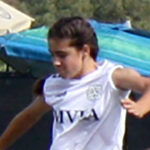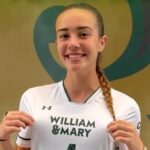Exercises and workouts to prevent ACL injuries
In PSW’s ACL story last week, strength and flexibility exercises were discussedin order to prevent ACL injuries in young soccer players. Here are some recommended exercises you can add to your workout or training session from the Santa Monica Orthopaedic and Sports Medicine Research Foundation.
The PEP Program: Prevent injury and Enhance Performance
This prevention program consists of a warm-up, stretching, strengthening, plyometrics, and sport specific agilities to address potential deficits in the strength and coordination of the stabilizing muscles around the knee joint. It is important to use proper technique during all of the exercises. The coaches and trainers need to emphasize correct posture, straight up and down jumps without excessive side-to-side movement, and reinforce soft landings. This program should be completed 3 times a week.
The field should be set up 10 minutes prior to the warm-up. This will allow for a smooth
transition between the activities.
This program should take approximately 15 – 20 minutes to complete. Along side each exercise you will notice a box with the approximate amount of time that should be spent on each activity. This will serve as a guideline to you in order to conduct your warm-up in a time efficient manner.
_____
1. Warm-up: Warming up and cooling down are a crucial part of a training program.
The purpose of the warm-up section is to allow the athlete to prepare for activity. By
warming up your muscles first, you greatly reduce the risk of injury.
A. Jog line to line (cone to cone): Elapsed Time: 0 – .5 minute
Purpose: Allows the athletes to slowly prepare themselves for the training session
while minimizing the risk for injury. Educate athletes on good running technique;
keep the hip/knee/ankle in straight alignment without the knee caving in or the feet
whipping out to the side.
Instruction: Complete a slow jog from near to far sideline
B. Shuttle Run (side to side) Elapsed Time: .5 to 1 minute
Purpose: engage hip muscles (inner and outer thigh). This exercise will promote
increased speed. Discourage inward caving of the knee joint.
Instruction: Start is an athletic stance with a slight bend at the knee. Leading with
the right foot, sidestep pushing off with the left foot (back leg). When you drive
off with the back leg, be sure the hip/knee/ankle are in a straight line. Switch sides
at half field.
C. Backward Running Elapsed Time: 1 – 1.5 minutes
Purpose: continued warm-up; engage hip extensors/hamstrings. Make sure the
athlete lands on her toes. Be sure to watch for locking of the knee joint. As the
athlete brings her foot back, make sure she maintains a slight bend to the knee.
Instruction: Run backwards from sideline to sideline. Land on your toes without
snapping the knee back. Stay on your toes and keep the knees slightly bent at all
times.
2. Stretching: It is important to incorporate a short warm-up prior to stretching. Never
stretch a “cold muscle”. By doing the exercises outlined here, you can improve and
maintain your range of motion, reduce stiffness in your joints, reduce post-exercise
soreness, reduce the risk of injury and improve your overall mobility and performance.
• Do a large muscle warm-up such as brisk walking for five to 10 minutes before
stretching.
• Don’t bounce or jerk when you stretch. Gently stretch to a point of tension and hold.
• Hold the stretch for 30 seconds. Concentrate on lengthening the muscles when you’re stretching.
• Breathe normally. Don’t hold your breath.
A. Calf stretch (30 seconds x 2 reps) Elapsed Time: 1.5 to 2.5 minutes
Purpose: stretch the calf muscle of the lower leg
Instruction: Stand leading with your right leg. Bend forward at the waist and place
your hands on the ground (V formation). Keep your right knee slightly bent and
your left leg straight. Make sure your left foot is flat on the ground. Do not bounce
during the stretch. Hold for 30 seconds. Switch sides and repeat.
B. Quadricep stretch (30 seconds x 2 reps) Elapsed Time: 2.5 to 3.5 minutes
Purpose: stretch the quadricep muscle of the front of the thigh
Instruction: Place your left hand on your partner’s left shoulder. Reach back with
your right hand and grab the front of your right ankle. Bring your heel to buttock.
Make sure your knee is pointed down toward the ground. Keep your right leg close
to your left. Don’t allow knee to wing out to the side and do not bend at the waist.
Hold for 30 seconds and switch sides.
C. Figure Four Hamstring stretch (30 sec x 2 reps) Elapsed Time: 3.5 – 4.5 min
Purpose: To stretch the hamstring muscles of the back of the thigh.
Instruction: Sit on the ground with your right leg extended out in front of you.
Bend your left knee and rest the bottom of your foot on your right inner thigh.
With a straight back, try to bring your chest toward your knee. Do not round your
back. If you can, reach down toward your toes and pull them up toward your head.
Do not bounce. Hold for 30 seconds and repeat with the other leg.
D. Inner Thigh Stretch (20 sec x 3 reps) Elapsed Time: 4.5 – 5.5 min
Purpose: Elongate the muscles of the inner thigh (adductor group)
Instruction: Remain seated on the ground. Spread you legs evenly apart. Slowly
lower yourself to the center with a straight back. You want to feel a stretch in the
inner thigh. Now reach toward the right with the right arm. Bring your left arm
overhead the stretch over to the right. Hold the stretch and repeat on the opposite
side.
E. Hip Flexor Stretch – (30 sec x 2 reps) Elapsed Time: 5.5- 6.5 min
Purpose: Elongate the hip flexors of the front of the thigh.
Instruction: Lunge forward leading with your right leg. Drop your left knee down
to the ground. Placing your hands on top of your right thigh, lean forward with your
hips. The hips should be square with your shoulders. If possible, maintain your
balance and lift back for the left ankle and pull your heel to your buttocks. Hold for
30 seconds and repeat on the other side.
3. Strengthening: This portion of the program focuses on increasing leg strength. This
will lead to increased leg strength and a more stable knee joint. Technique is everything;
close attention must be paid to the performance of these exercises in order to avoid
injury.
A. Walking Lunges (3 sets x 10 reps) Elapsed Time: 6.5 – 7.5 min
Purpose: Strengthen the thigh (quadriceps) muscle.
Instruction. Lunge forward leading with your right leg. Push off with your right
leg and lunge forward with your left leg. Drop the back knee straight down.
Make sure that your keep your front knee over your ankle. Control the motion
and try to avoid you front knee from caving inward. If you can’t see your toes on
your leading leg, you are doing the exercise incorrectly.
B. Russian Hamstring (3 sets x 10 reps) Elapsed Time: 7.5 –8.5 min
Purpose: Strengthen hamstrings muscles
Instruction: Kneel on the ground with hands at your side. Have a partner hold
firmly at your ankles. With a straight back, lead forward leading with your hips.
Your knee, hip and shoulder should be in a straight line as you lean toward the
ground. Do not bend at the waist. You should feel the hamstrings in the back of
your thigh working. Repeat the exercise for 3 sets of 10, or a total of 30 reps.
C. Single Toe Raises (30 reps x 2 reps) Elapsed Time: 8.5 – 9.5 min
Purpose: This exercise strengthens the calf muscle and increases balance.
Instruction: Stand up with your arms at your side. Bend the left knee up and
maintain your balance. Slowly rise up on your right toes with good balance. You
may hold your arms out ahead of you in order to help. Slowly repeat 30 times
and switch to the other side. As you get stronger, you may need to add additional
repetitions to this exercise to continue the strengthening effect of the exercise.
4. Plyometrics – These exercises are explosive and help to build, power, strength and
speed. The most important element when considering performance technique is the
landing. It must be soft! When you land from a jump, you want to softly accept your
weight on the balls of your feet slowly rolling back to the heel with a bent knee and a
straight hip. These exercises are basic, however, it is critical to perform them correctly.
Please take the time to ensure safe and correct completion of these exercises.
A. Lateral Hops over Cone (20 reps) Elapsed Time: 9.5 – 10min
Purpose: Increase power/strength emphasizing neuromuscular control
Instruction: Stand with a 6” cone to your left. Hop to the left over the cone softly
landing on the balls of your feet land bending at the knee. Repeat this exercise
hopping to the right.
B. Forward/Backward Hops over cone (20 reps) Elapsed Time: 10 – 10.5 min
Purpose: Increase power/strength emphasizing neuromuscular control
Instruction: Hop over the cone/ball softly landing on the balls of your feet and
bending at the knee. Now, hop backwards over the ball using the same landing
technique. Be careful not to snap your knee back to straighten it. You want to
maintain a slight bend to the knee. Repeat for 20 reps.
C. Single Leg hops over cone (20 reps) Elapsed Time: 10.5 – 11 min
Purpose: Increase power/strength emphasizing neuromuscular control.
Instruction: Hop over the cone/ball landing on the ball of your foot bending at the
knee. Now, hop backwards over the ball using the same landing technique. Be
careful not to snap your knee back to straighten it. You want to maintain a slight
bend to the knee. Repeat for 20 reps. Now, stand on the left leg and repeat the
exercise. Increase the number of repetitions as needed.
D. Vertical Jumps with headers (20 reps) Elapsed Time: 11 – 11.5 min
Purpose: Increase height of vertical jump.
Instruction: Stand forward with hands at your side. Slightly bend the knees and
push off jumping straight up. Remember the proper landing technique; accept the
weight on the ball of your foot with a slight bend to the knee. Repeat 20 times and
switch sides.
E. Scissors Jump (20 reps) Elapsed Time: 11.5 – 12 min
Purpose: Increase power and strength of vertical jump.
Instruction: Lunge forward leading with your right leg. Keep your knee over your
ankle. Now, push off with your right foot and propel your left leg forward into a
lunge position. Be sure your knee does not cave in or out. It should be stable and
directly over the ankle. Remember the proper landing technique; accept the weight
on the ball of your foot with a slight bend to the knee. Repeat 20 times.
5. Agilities
A. Shuttle run with forward/backward running Elapsed Time 12 – 13 min
Purpose: Increase dynamic stability of the ankle/knee/hip complex
Instruction: Starting at the first cone, sprint forward to the second cone, run
backward to the third cone, sprint forward to the fourth cone (etc…).
B. Diagonal runs (3 passes) Elapsed Time 13 – 14 min
Purpose: To encourage proper technique/stabilization of the outside planted foot to
deter the position from occurring.
Instruction: Face forward and run to the first cone on the left. Pivot off the left foot
and run to the second cone. Now pivot off the right leg and continue onto the third
cone. Make sure that the outside leg does not cave in. Keep a slight bend to the knee
and make sure the knee stays over the ankle joint.
C. Bounding run (44 yds) Elapsed Time 14 – 15 min
Purpose: To increase hip flexion strength/increase power/speed
Instruction: Starting on the near sideline, run to the far side with knees up toward
chest. Bring your knees up high. Land on the ball of your foot with a slight bend at
the knee and a straight hip. Increase the distance as this exercise gets easier.
6. Alternative Exercises – Warm Down and Cool Down
We all know how imperative a cool down is. Please don’t skip it. It allows the muscles
that have been working hard throughout the training session to elongate and deters the
onset of muscle soreness. Please emphasize the importance of adequate fluid intake
(optimally water). Athletes should have a water bottle by their side during the cool down.
The cool down should take approximately 10 minutes. It should begin with a slow jog to
allow the heart rate to come down before stretching. This should be followed by some
light strength training exercises. We are recommending two strengthening exercises (see below). Finally, stretch the hamstrings, calves, inner thigh, quadriceps, and low back (all of these are explained in the protocol). In addition to those basic stretches, we are offering some additional stretches to target 3 muscle groups that are often forgotten.
A. Bridging with Alternating Hip Flexion (30 reps)
Purpose: Strengthen outer hip muscles (Hip abductors, flexors) and buttocks
Instruction: Lie on the ground with your knees bent with feet on the ground. Raise
your buttocks up off the ground and squeeze. Now, lift your right foot off the
ground and make sure that your right hip does not dip down. Lower your right foot
and now lift your left foot making sure your left hip does not dip down. Repeat 30
times on each side. As you get stronger, you will place your feet on top of a ball
and repeat the exercise.
B. Abdominal Crunches (30 reps x 2 reps)
Purpose: Strengthen the abdominals (rectus abdominus, obliques)
Instruction: Lie on the ground with you knees bent. Place your hands behind your
head with your elbows out wide. Support your neck lightly with your fingers.
Take a deep breath in and slowly contract your abdominal muscles as you exhale.
Repeat 30 times. Drop your legs off to the right side. Slowly crunch up with your
elbows out wide. You should feel your oblique muscles working on the side of
your waist. Repeat 30 times and switch to the other side.
C. Single and Double Knee to Chest (supine) (30 sec x 2 reps)
Purpose: Elongate the low back muscles
Instruction: Lie on your back. Bring your right knee toward your chest and hug
firmly. Keep your left leg out straight in front of you. You should feel a stretch
along your low back and into your buttocks. Hold the stretch for 30 seconds and
switch sides. Now bring both knees to chest. If you feel any pain in the low back,
discontinue the stretch and inform your coach/trainer.
D. Figure Four Piriformis stretch- supine (30 sec x 2 reps)
Purpose: Elongate the rotators of the hip.
Instruction: Lie on your back and bend both of your knees. Fold your left ankle
over your right knee. Place your hands behind your right thigh and pull your right
knee to chest. You should feel a good stretch in the left gluteals region and the side
of the thigh. Hold for 30 seconds and repeat on the other side. If you experience
and low back pain with this stretch, slowly lower your legs down and let your
coach/trainer know.
E. Seated Butterfly stretch – seated (30 sec x 2 reps)
Purpose: Elongate the inner thigh muscles (adductors).
Instruction: Sit up bringing your feet in so that the soles of your feet are touching.
Gently place your elbows on your knees and slowly push down. You should feel a
good stretch of the inner thigh. Hold this for 30 seconds and repeat 2 to 3 times.











